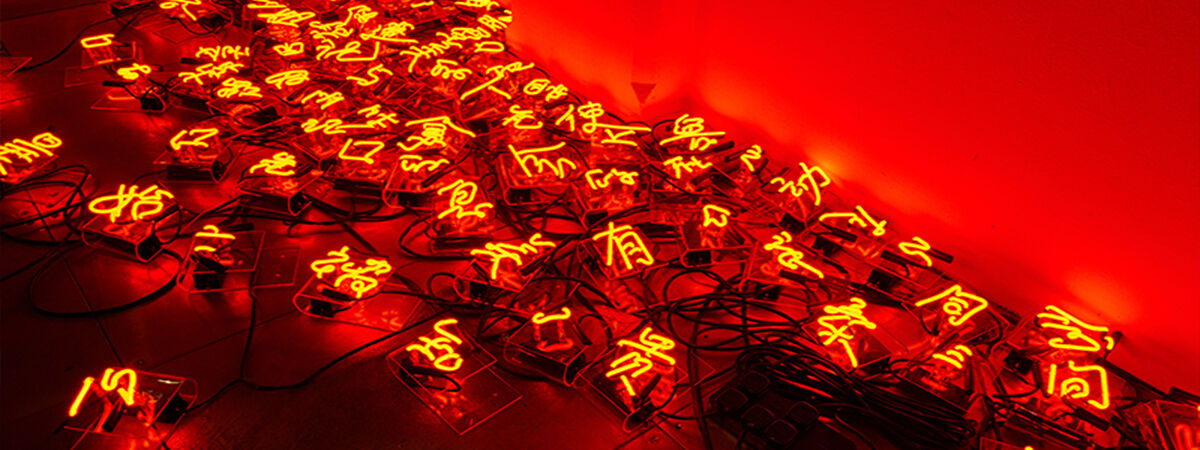This exhibition explored the ideologies behind President Xi Jinping's notion of the Chinese Dream, while at the same time investigating parallels between the cities of Liverpool and Shanghai through contemporary art.

Researchers
- Prof. Jiang Jiehong
- Shenglan Yu
Open Eye Gallery partners
- Sara Fisher
- Thomas Dukes
Research background
This exhibition was mounted in 2018 at the Cunard Building in Liverpool in collaboration with the city’s Open Eye Gallery. The exhibition celebrated the city’s 10th anniversary as European Capital of Culture, an award conferred in 2008. The curatorial focus revolved around the urban cityscape of Shanghai and celebrated the twinning of Shanghai with Liverpool, drawing parallels between the two cities whilst fomenting cultural exchange.
Research aims
The overarching theme of the exhibition focussed on artistic responses to President Xi Jinping’s notion of the Chinese Dream (Zhongguo Meng), reflecting extraordinary economic development and rapid urban transformation in a Chinese context. Furthermore, the exhibition also hoped to explore similarities in urban existence between Liverpool and Shanghai. Finally, the exhibition hoped to draw parallels between Shanghai’s famous bund and Liverpool’s waterfront, both potent symbols of economic development and regeneration. The exhibition was staged at the city’s Cunard building and in public spaces around the city to maximise outreach.
Research methods
Jiang Jiehong drew from an extensive network of Shanghai-based artists to bring together a series of works exploring the idiosyncrasies of China’s most global-facing, cosmopolitan city of 24 million people. In particular, artists represented by the ShangART gallery in China are present in the exhibition. A total of 10 artists were selected for inclusion.
Outcomes
the British public to participate, engendering engagement with the local community. Chinese martial artists performed atop a miniature remake of Stonehenge to explore the notion of physical exercise and ritual.
The work Disinfect by Yang Zhengzhong juxtaposed Shanghai residents of differing social classes and age ranges that are all furious, infected with a mysterious urban disease. Zhenzhong conveyed the adverse effects of rapid economic development and unprecedented change in the pace of life can have on our mental health.
Zhao Xiaohu’s work The Same Warmth and Cold Throughout the Globe is named after a line of a Mao Zedong poem. He engages in the contemporary use of shadows as a universal phenomenon that confirms our intrinsic humanity.
In Shi Yong’s work A Bunch of Happy Fantasies, neon lights assume the form of urban poetry, recounting an incident that occurred in Shanghai. However, the garish neon simultaneously serves to question the reality of news sources and social media.
Yang Fudong’s work My Heart was touched last year presents a nostalgic image of 1930s Shanghai through the image of a glamourous film actress. However, there is a slippage between the work as photograph and film. The work suggests an ambiguity between a still and a moving image, between ‘past’ and ‘current’, until the drops of tears slide eventually down the actresses’ cheek.